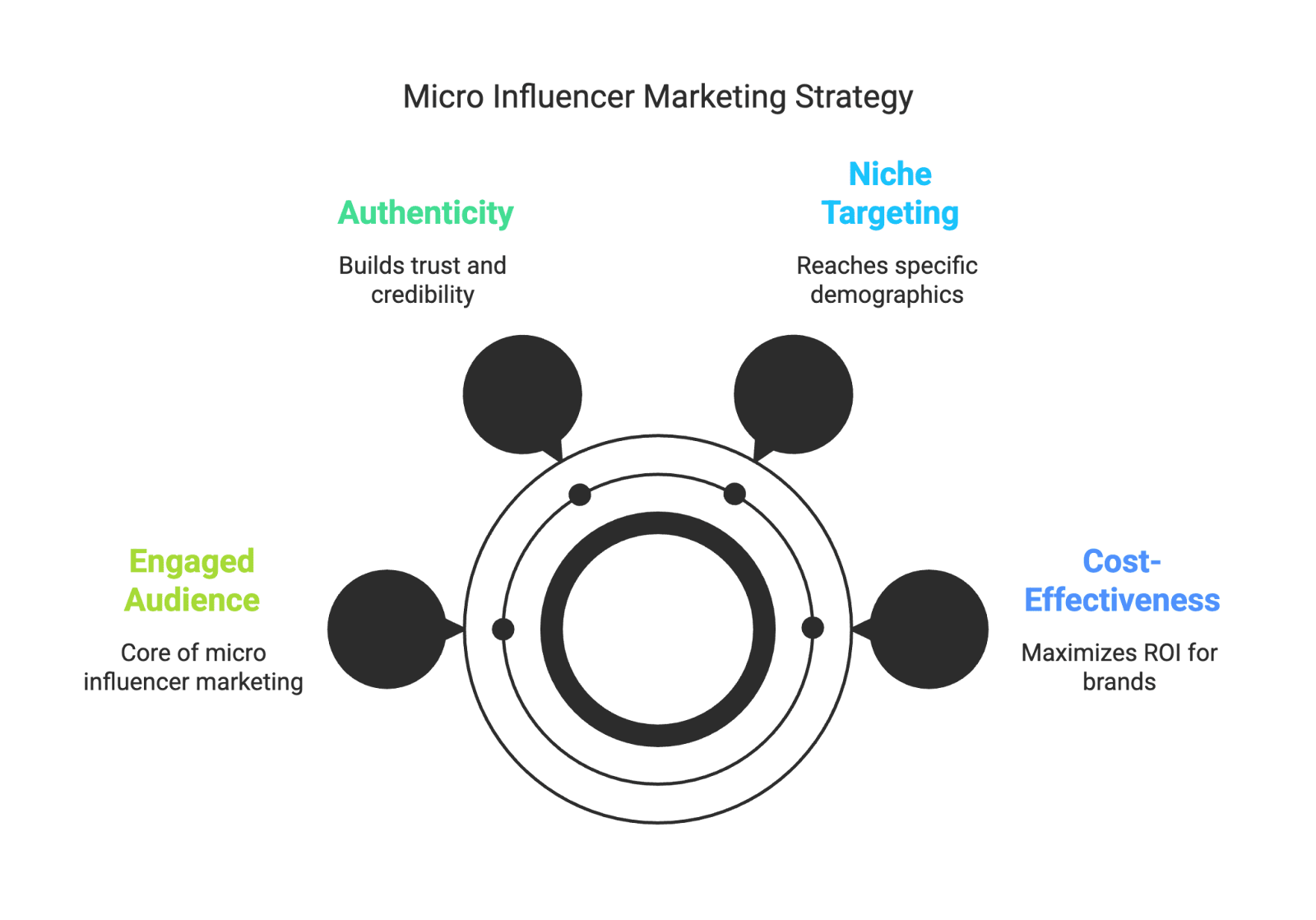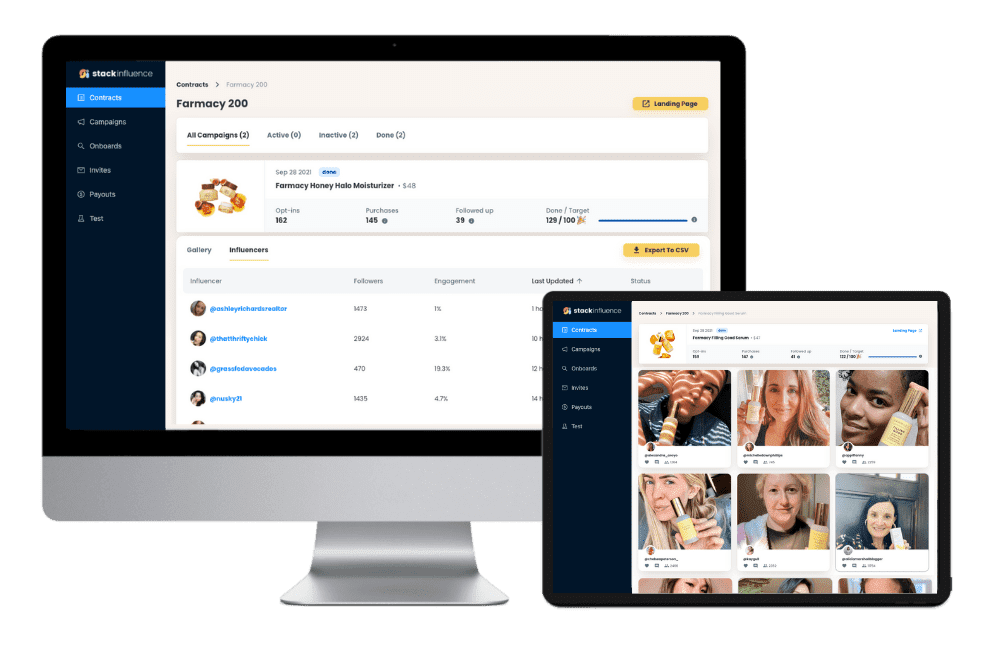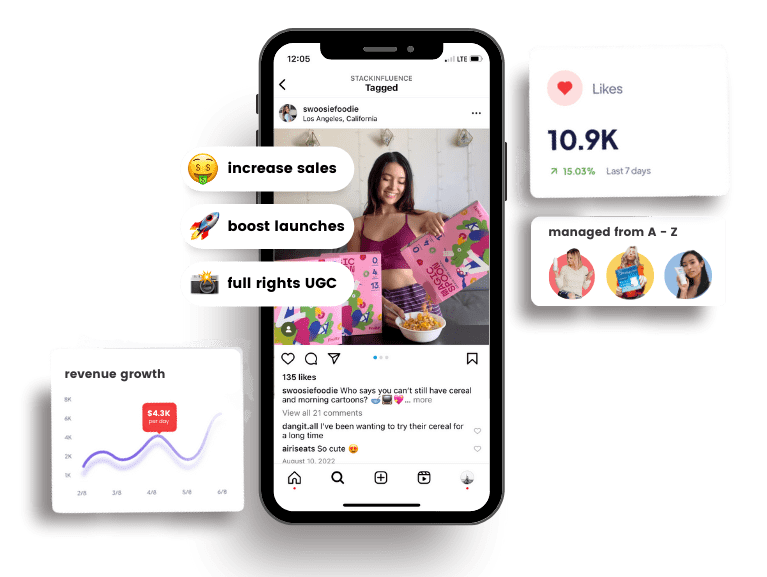What Is a Micro Influencer Agency?
16th
August, 2025
Influencer Marketing
Amazon Marketplace
Artificial Intelligence
TikTok Tips
Bigger isn’t always better in influencer marketing. Enter the micro influencers – content creators with smaller but super-engaged followings – and the specialized agencies that connect these creators with brands. Micro influencer agencies have become a go-to solution for e-commerce companies (from D2C startups to Amazon sellers) looking to generate authentic buzz through relatable creators and user-generated content (UGC). The industry itself is booming (global influencer marketing spend hit $32+ billion in 2025 amid a shift toward ROI-focused, micro-scale campaigns), and 73% of brands now prefer working with micro or mid-tier influencers due to their strong engagement-to-cost ratio. In this blog, we’ll break down what micro influencer agencies are, how they work, and why they’re so valuable for modern brands and content creators.
Understanding Micro Influencers

Micro influencers are social media personalities with a relatively small but highly engaged audience – typically in the few thousand up to around 100,000 followers range. Unlike celebrity or “macro” influencers who reach millions, micro influencers operate in specific niches and often feel like everyday peers to their followers. They might be passionate hobbyists, bloggers, or local experts, and their recommendations come off as genuine advice rather than overt ads. This authenticity and relatability give micro influencers an outsized impact on purchasing decisions.
Some key advantages of micro influencers include:
- Higher Engagement Rates: Micro influencers often enjoy far greater engagement on their posts than big influencers. It’s common to see 5–20% of their followers actively liking and commenting, whereas macro influencers (hundreds of thousands or millions of followers) might only get ~1–3% engagement. For example, a micro creator with 10k followers might get ~1k likes (~10%), while a celebrity with 1M followers might only get 20k (2%). These higher engagement rates signal a loyal community that’s paying attention, which not only boosts visibility (thanks to social algorithms) but also means more people act on their content.
- Authenticity and Trust: Because they are “regular people” focused on a specific interest or community, micro influencers come across as more genuine and trustworthy. Their content feels like a personal recommendation rather than a polished ad, which resonates with consumers. In fact, in one survey 82% of consumers said they are highly likely to follow a micro-influencer’s recommendation. This aligns with other findings (e.g. Nielsen) that around 84% of people trust peer recommendations over traditional advertising. Followers see micro influencers as relatable friends or experts, so a shout-out from them carries credibility that a brand’s self-promotion often lacks. No wonder nearly 90% of consumers say authenticity is important when deciding which brands to support.
- Niche Targeting (Relevant Audiences): Micro influencers typically cater to a specific niche or demographic, which is gold for targeted marketing. Whether it’s a vegan foodie with 8,000 followers or a tech gadget reviewer with 50,000, these creators attract audiences deeply interested in those topics. Brands can partner with micro influencers whose followers closely match the product’s target market – often even in specific regions or communities. For example, a U.S. supplement brand could work with a fitness micro influencer in Germany to reach German gym-goers, or an eco-friendly baby products seller might collaborate with a parenting micro-blogger in Brazil to connect with Brazilian moms. This tight audience alignment means the influencer’s fans are exactly the kind of potential customers the brand wants to reach, leading to higher relevancy and conversion rates.
- Cost-Effective Marketing (Better ROI): Working with micro influencers is usually budget-friendly, especially compared to mega-influencers or big ad campaigns. Many micro influencers will promote products for just a free sample or a few hundred dollars, whereas a single post from a famous influencer can cost tens of thousands. For the price of one celebrity post, a brand could hire dozens of micro influencers, multiplying its reach and content output. This low cost + high engagement combo often translates to a higher return on investment. Case in point: one study found micro/nano-influencer campaigns deliver around a 20:1 ROI ($20 in revenue per $1 spent) versus roughly 6:1 ROI for macro-influencer campaigns. In short, micro influencers “punch above their weight,” providing more bang for your marketing buck by delivering authentic reach and conversions at a fraction of the cost.
In sum, a micro influencer may lack a giant follower count, but they excel at sparking genuine conversations and trust. Their followers often view them as friends with expertise, which means recommendations feel more like advice than advertising. This is exactly why brands are increasingly eager to leverage micro influencers in their marketing strategies.

Unlock the Power of Micro Influencers and Elevate your Brand Today!

What Is a Micro Influencer Agency?
A micro-influencer agency is a specialized type of influencer marketing agency that focuses on these smaller, high-engagement creators. In simple terms, it’s a company that connects brands with micro influencers (typically those with ~1K–100K followers) and manages the collaboration process. These agencies handle everything from finding the right niche creators to managing campaigns and measuring results. In essence, they act as matchmakers and project managers between brands and a network of micro influencers.
What services does a micro influencer agency provide? Typically, they offer end-to-end campaign support. For example, a full-service agency will assist with influencer discovery, crafting a campaign strategy, coordinating content creation, handling campaign management, and tracking analytics & ROI. The agency’s role is to simplify the process so that brands don’t have to individually vet and negotiate with dozens of small creators – the agency already has a vetted network and a system to execute campaigns efficiently. They ensure the influencers are a good fit for the brand, help set up the collaboration (often including shipping products to influencers, setting content guidelines, etc.), and then oversee the content postings and results.
In fact, entire platforms now exist solely for micro influencer campaigns. Stack Influence, for example, is an industry-leading micro influencer marketing platform geared toward e-commerce brands. It describes itself as a team of experienced e-commerce sellers turned marketers, and it leverages proprietary AI technology to source “consumer influencers” (everyday content creators), guarantee 100% social post completion, and manage campaigns from A to Z. Agencies like this have streamlined the process of micro influencer marketing – allowing a brand to tap into a large pool of vetted micro creators without the usual headaches of outreach, coordination, and follow-up. The agency model means even a small brand can launch a campaign with, say, 50 micro influencers receiving free products, rather than the brand trying to orchestrate all those relationships one by one.
How Do Micro Influencer Agencies Work? (Campaign Process)

If you’re wondering what it actually looks like when a brand works with a micro influencer agency, let’s walk through a typical campaign process. While exact steps can vary by agency, the overall flow is pretty standard. Here’s an example of how a micro influencer campaign might be executed, step by step:
- Campaign Planning: First, the brand and agency define the campaign goals and requirements. The brand shares its product, target audience, key messaging, and budget. The agency then develops a campaign strategy tailored to those goals – choosing the right social platforms (e.g. Instagram, TikTok), defining the timeline, and setting KPIs (like engagement targets, link clicks, or sales conversions).
- Micro Influencer Sourcing: Next, the agency uses its network and tools to identify and recruit micro influencers who match the brand’s niche and audience criteria. This might involve searching their database of creators (filtered by niche, demographics, location, etc.) and reaching out to those who are a good fit. The agency essentially shortlists influencers who align with the brand – for example, finding 20–100 micro influencers who love fitness and align with a new athletic apparel brand. By leveraging an established network, agencies can find the perfect niche creators much faster than a brand could on its own.
- Onboarding & Product Seeding: Once the influencers agree to participate, the agency onboards them into the campaign. Influencers receive a campaign brief with guidelines (e.g. required hashtags, key messaging, posting deadlines) and, importantly, they often receive the product itself. In micro influencer campaigns, it’s common that influencers are compensated with free products rather than large cash fees. For instance, an Amazon seller might send each micro influencer a free sample of their product (like a kitchen gadget or a skincare kit) for the influencer to try out and post about. This product-as-payment model keeps costs low and ensures the posts feel authentic – the influencers are sharing a real experience with the product. (As Stack Influence puts it, paying micro influencers in product leads to social posts that are genuine consumer experiences – essentially “word-of-mouth marketing at scale”.) The agency coordinates all this logistics: getting shipping info, sending out products, and making sure each influencer is set up for success.
- Campaign Execution & Monitoring: With products in hand and guidelines in place, the micro influencers create their content – typically organic-looking posts, stories, or short videos featuring the product. During this phase, the agency closely monitors the campaign. They manage the relationships and ensure every influencer fulfills their posting commitments on time. If an influencer has questions or issues, the agency handles the communication. Essentially, the agency acts as the project manager, making sure the campaign stays on track. They might also amplify the posts by encouraging cross-sharing or leveraging the brand’s channels to repost influencer content. All the while, they’re tracking engagement as it comes in (likes, comments, shares, clicks) and keeping an eye on any early results like referral traffic or sales spikes.
- Analysis & Amplification: After the content has been published, the agency will collect and analyze the results. They compile data on how each post performed – engagement metrics, reach, clicks, and any available sales conversions – to measure the campaign’s impact. The brand typically receives a report showing which influencers drove the most engagement or traffic, how the overall campaign met the KPIs, and insights for next time. Importantly, the agency also helps the brand capitalize on all the UGC content that was created. Often the brand gains rights to reuse the photos, videos, and testimonials generated by those micro influencers (many agencies ensure you get full rights to these “reusable media assets” for marketing purposes). This means the authentic content can be repurposed on the brand’s website, social media, or even product pages – extending the value of the campaign. By the end, the brand not only sees the immediate buzz and sales impact, but also ends up with a library of influencer-created content and learnings for future campaigns.
This managed process illustrates why brands find value in micro influencer agencies. The agency handles all the heavy lifting – planning, recruiting, negotiating, coordinating, and analyzing – so that the brand can reap the benefits of a word-of-mouth style campaign without needing an in-house team to manage it all.
Why E-Commerce Brands (and Amazon Sellers) Leverage Micro Influencers
It’s no coincidence that e-commerce brands are leading the charge in micro influencer marketing. For online sellers – whether you’re running your own web store or selling on a marketplace like Amazon – trust and social proof are everything. Micro influencer agencies provide a way to generate that trust at scale by harnessing real people to talk about your product.
Think about the typical Amazon shopper: before buying, they might look for authentic reviews, unboxing videos, or testimonials from “people like me.” Micro influencers excel at creating exactly this kind of content. They produce relatable posts and reviews that build consumer confidence in a way traditional ads often can’t. An enthusiastic Instagram post or TikTok demo from a niche creator can serve as both a recommendation and a piece of content that educates customers about the product. In one survey, 82% of consumers said they are highly likely to follow a micro influencer’s recommendation – which shows how persuasive these peer-level voices can be in driving purchase decisions. When a micro influencer raves about a kitchen gadget or models a new fashion item, their followers trust that opinion more than if it came from a glossy brand advertisement.
For Amazon sellers, micro influencer campaigns can be a game changer in launching or boosting products. Influencer-driven social posts don’t just create buzz – they can drive direct traffic to your Amazon product listings, which in turn boosts your sales rank and even leads to more reviews. Essentially, micro influencers become an army of small-scale brand ambassadors who spread the word and funnel interested buyers to your online storefront. This is especially valuable when you’re relatively unknown in a crowded market. A handful of passionate micro influencers talking about your product in their circles can ignite that crucial word-of-mouth spark.
Another big benefit for e-commerce is the content itself. The photos, videos, and stories generated by micro influencers are authentic UGC that the brand can leverage elsewhere. Brands often repurpose influencer content on their own social media, in email marketing, or even on product pages (for example, using influencer lifestyle shots in a gallery or quoting their testimonial in the description). This adds social proof throughout the customer journey. As an added plus, working with micro influencers is relatively low risk for new brands – you’re usually only giving away some free product or a modest fee, so even if one post doesn’t explode, you haven’t broken the bank. Compare that to spending $50k on a single celebrity post that might fall flat. It’s clear why small and medium e-commerce businesses, in particular, love the micro influencer approach.
Micro influencer agencies streamline all of this for e-commerce brands. They often handle product seeding at scale – sending out products to dozens of influencers – and ensure that each influencer’s post is an “authentic reflection of a genuine product experience,” not a scripted ad. In other words, the agency helps facilitate real people using and talking about the product, which generates that word-of-mouth marketing at scale. The end result for the brand is increased trust, more organic conversations about the product, and typically a boost in traffic and sales that can be directly attributed to these influencer activations.
It’s worth noting that many micro influencer agencies (including Stack Influence) were founded by experienced e-commerce sellers who saw the need for this type of service. They understand the pain points of launching products online – getting initial reviews, building social presence, generating content – and they built solutions to make influencer marketing scalable for sellers. As Stack Influence’s team put it, sourcing influencers, managing collaborations, and ensuring everyone follows through can be hard for a seller to do alone, and that’s exactly the problem the agency model solves.

Unlock the Power of Micro Influencers and Elevate your Brand Today!

Conclusion to What Is a Micro Influencer Agency?
In the age of authenticity, micro influencer agencies sit at the intersection of social media and commerce, turning everyday creators into powerful brand allies. By connecting niche influencers with e-commerce brands, these agencies enable marketing that feels more like genuine conversation than advertising. The result is a win-win: brands get affordable yet highly effective promotion, and micro influencers (the creators) get opportunities to monetize their passions and gain exposure, often with perks like free products and paid collaborations.
For marketers, the takeaway is that bigger isn’t always better – a targeted campaign with 50 micro influencers can often outperform one splashy post from a single mega-celebrity. It’s no surprise that marketers are increasingly shifting budgets toward micro influencer strategies and relying on agencies to handle the logistics. As of 2025, influencer marketing has evolved from experimental to essential, and brands are getting savvier about focusing on measurable ROI. Micro influencers, with their tight-knit communities, are perfectly positioned to deliver those tangible results.
Looking ahead, expect micro influencer agencies to continue growing in importance. Many are investing in AI-driven platforms to streamline everything from influencer discovery to performance forecasting. This could make micro campaigns even more efficient and data-driven. But at its core, the appeal of micro influencer marketing is unlikely to change: it’s effective because it leverages human-scale connections – the trust and engagement that come from real, relatable voices.
Whether you’re an Amazon seller launching your first product or a global e-commerce brand seeking authentic content, tapping into micro influencer agencies could be your secret weapon. They bring the “people” element back into marketing, at scale. And in a digital world saturated with ads, that genuine touch is exactly what makes customers hit the “buy” button.

By William Gasner
CMO at Stack Influence
William Gasner is the CMO of Stack Influence, he's a 6X founder, a 7-Figure eCommerce seller, and has been featured in leading publications like Forbes, Business Insider, and Wired for his thoughts on the influencer marketing and eCommerce industries.
Want new articles before they get published? Subscribe to our Awesome Newsletter.
stack up your influence
turning creativity into currency
our headquarters
111 NE 1st St, Miami, FL 33132
our contact info
[email protected]
stack up your influence
turning creativity into currency
our headquarters
111 NE 1st St, 8th Floor
Miami, FL 33132


